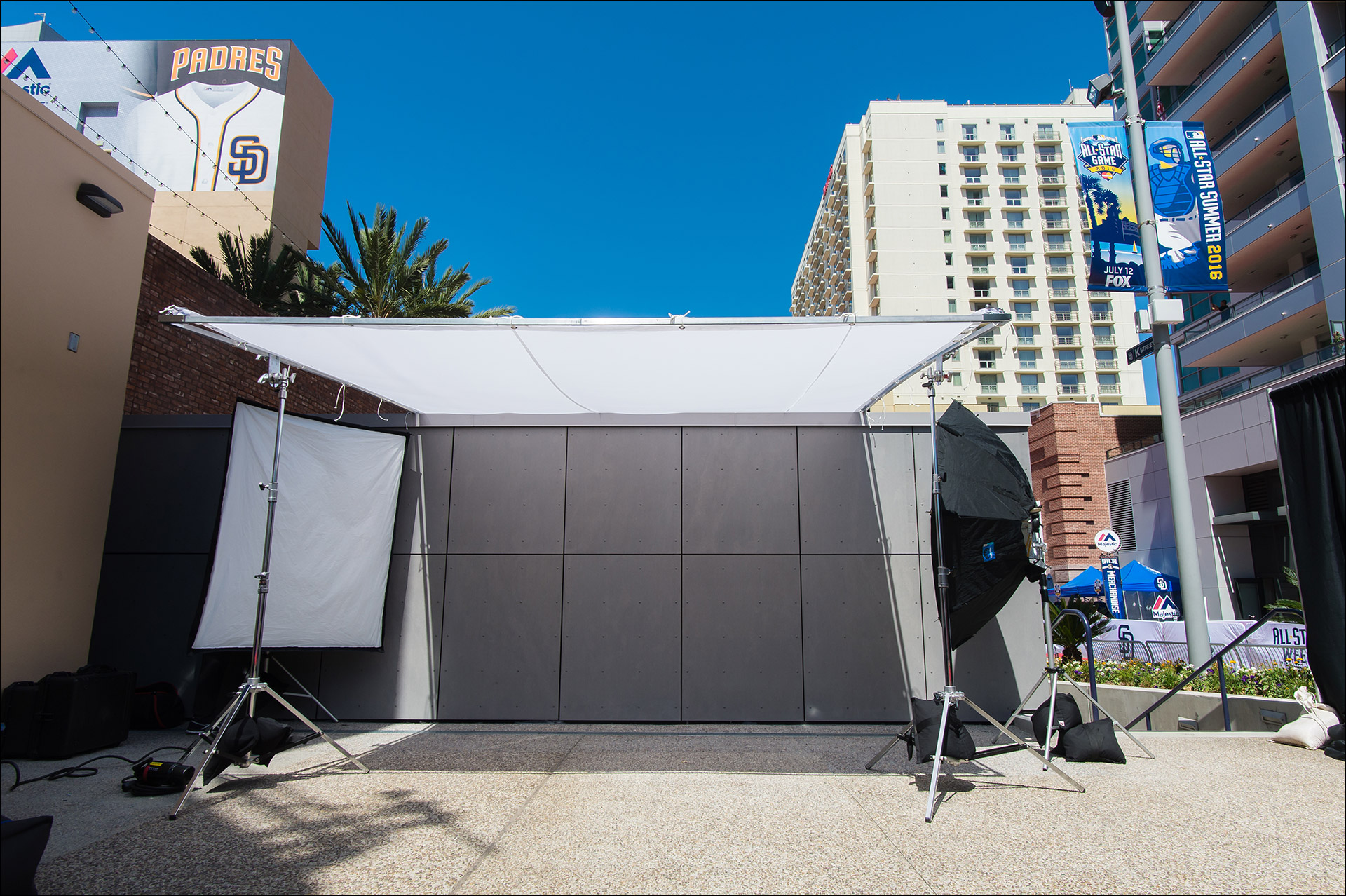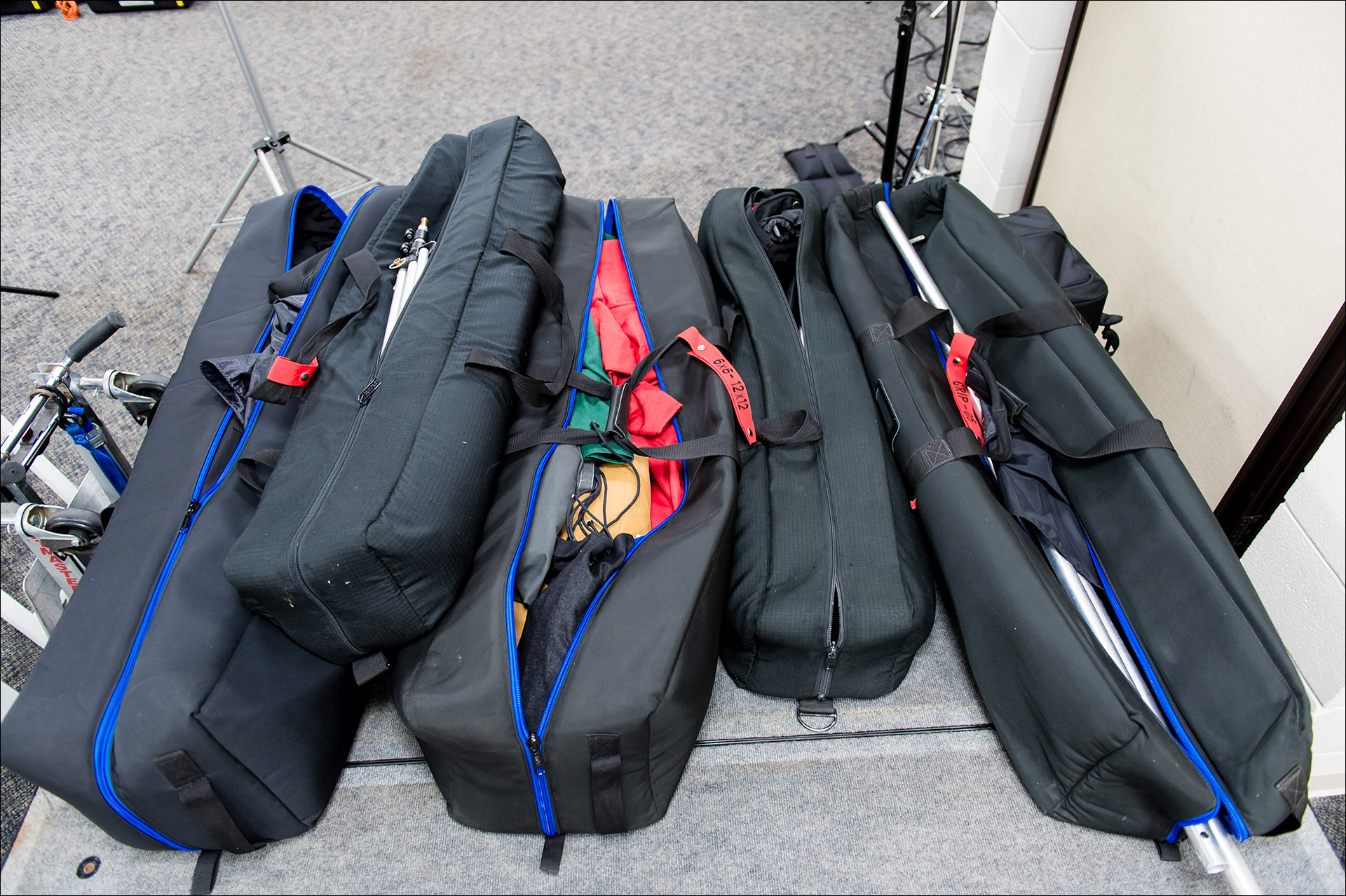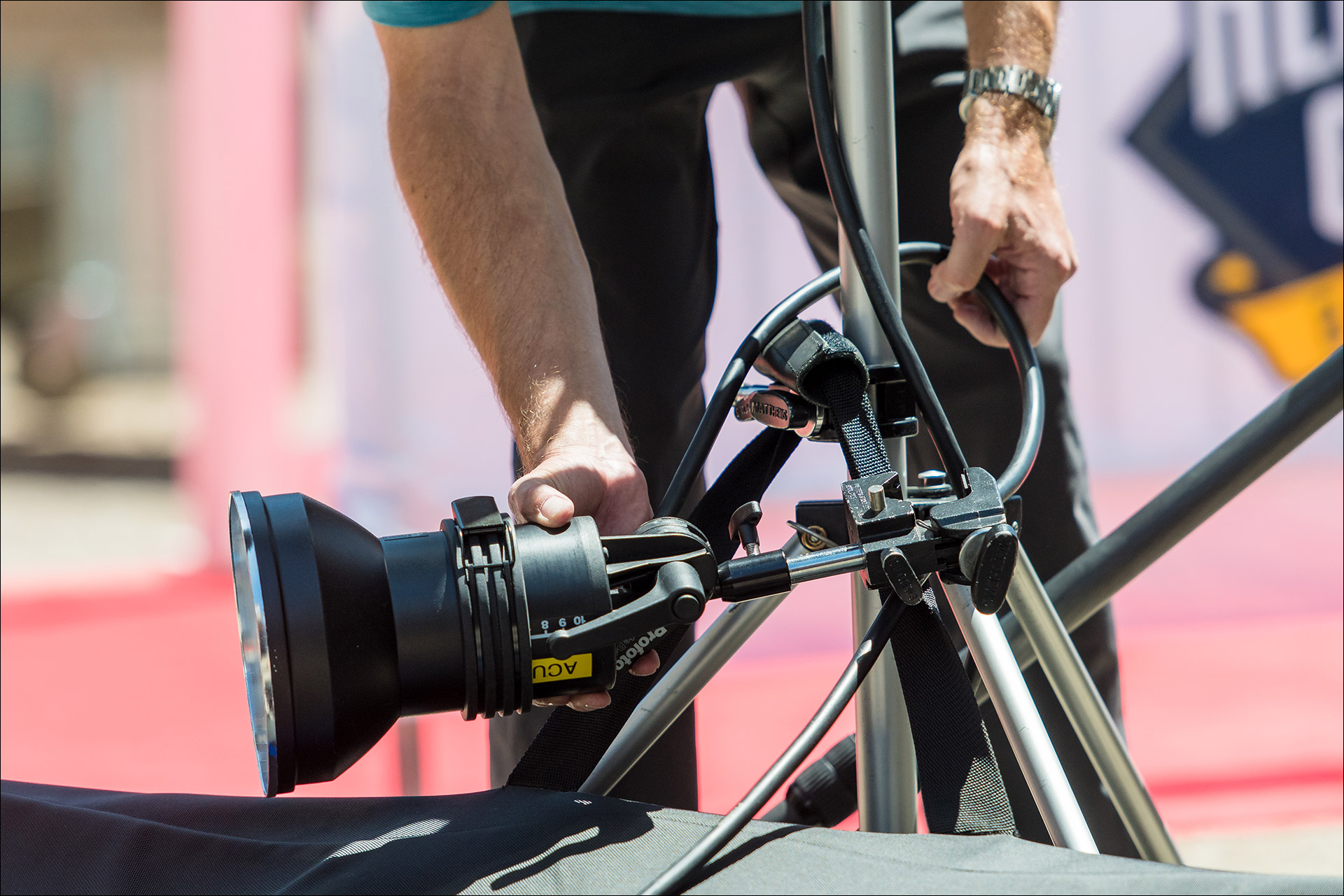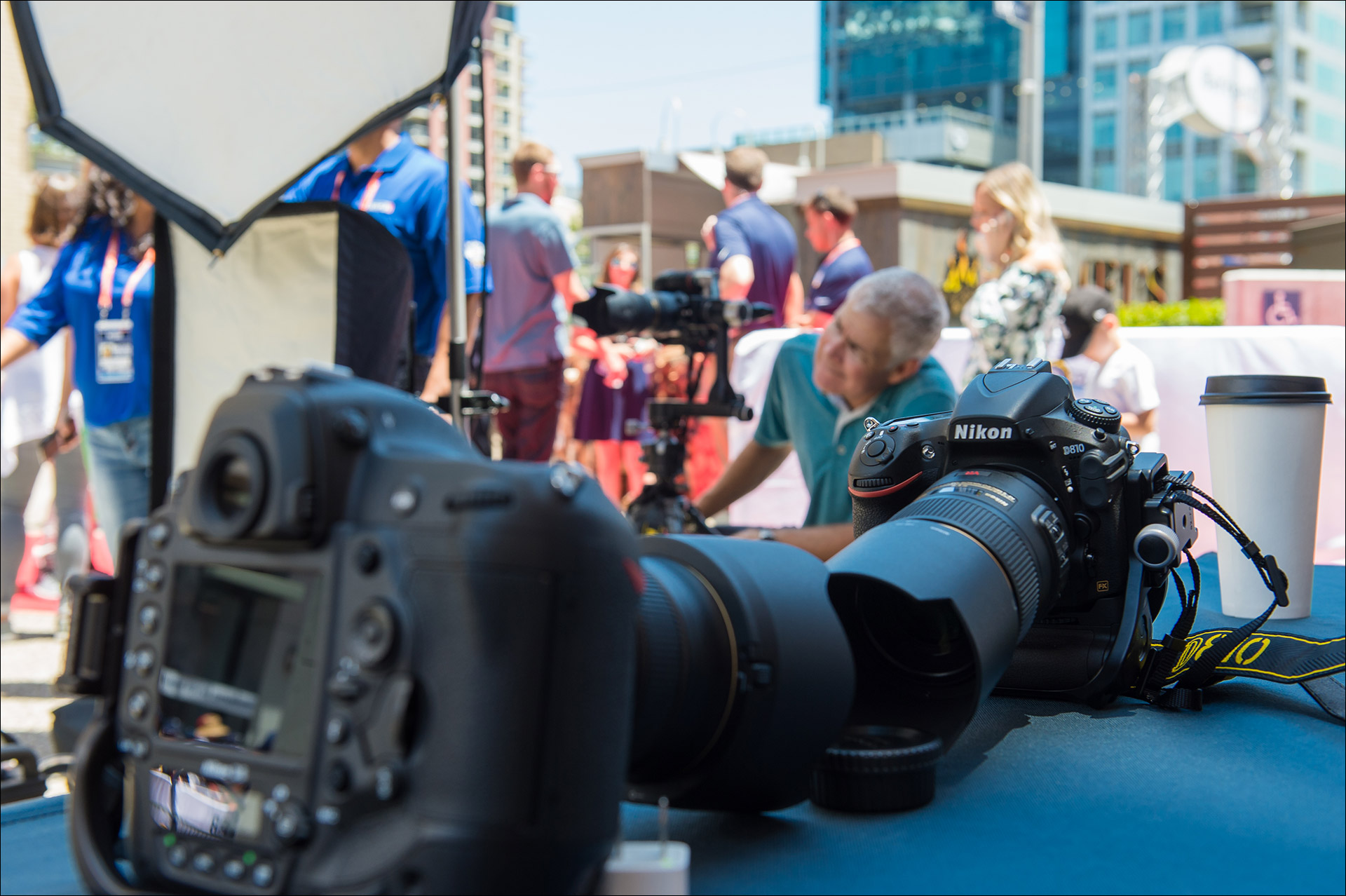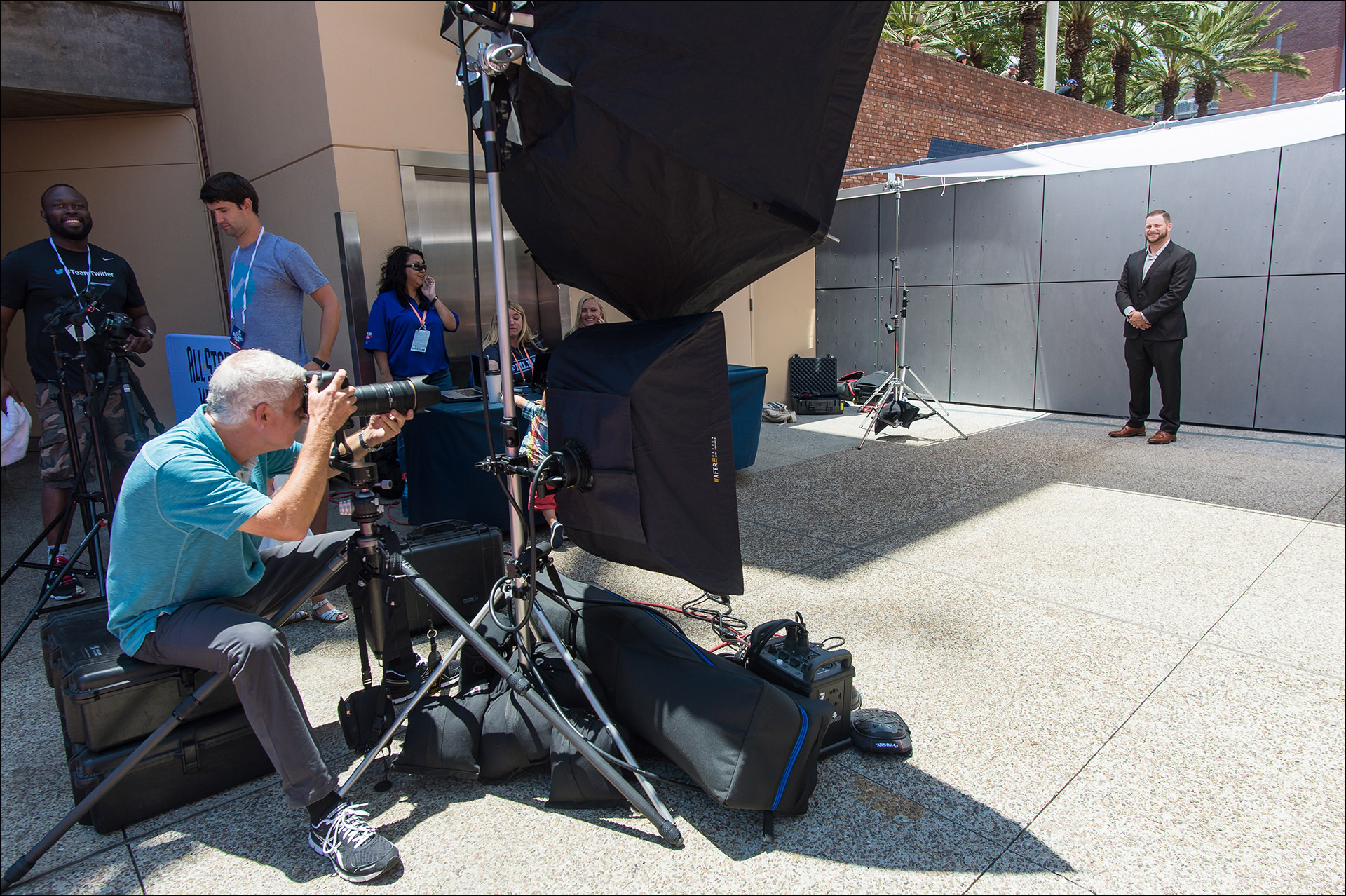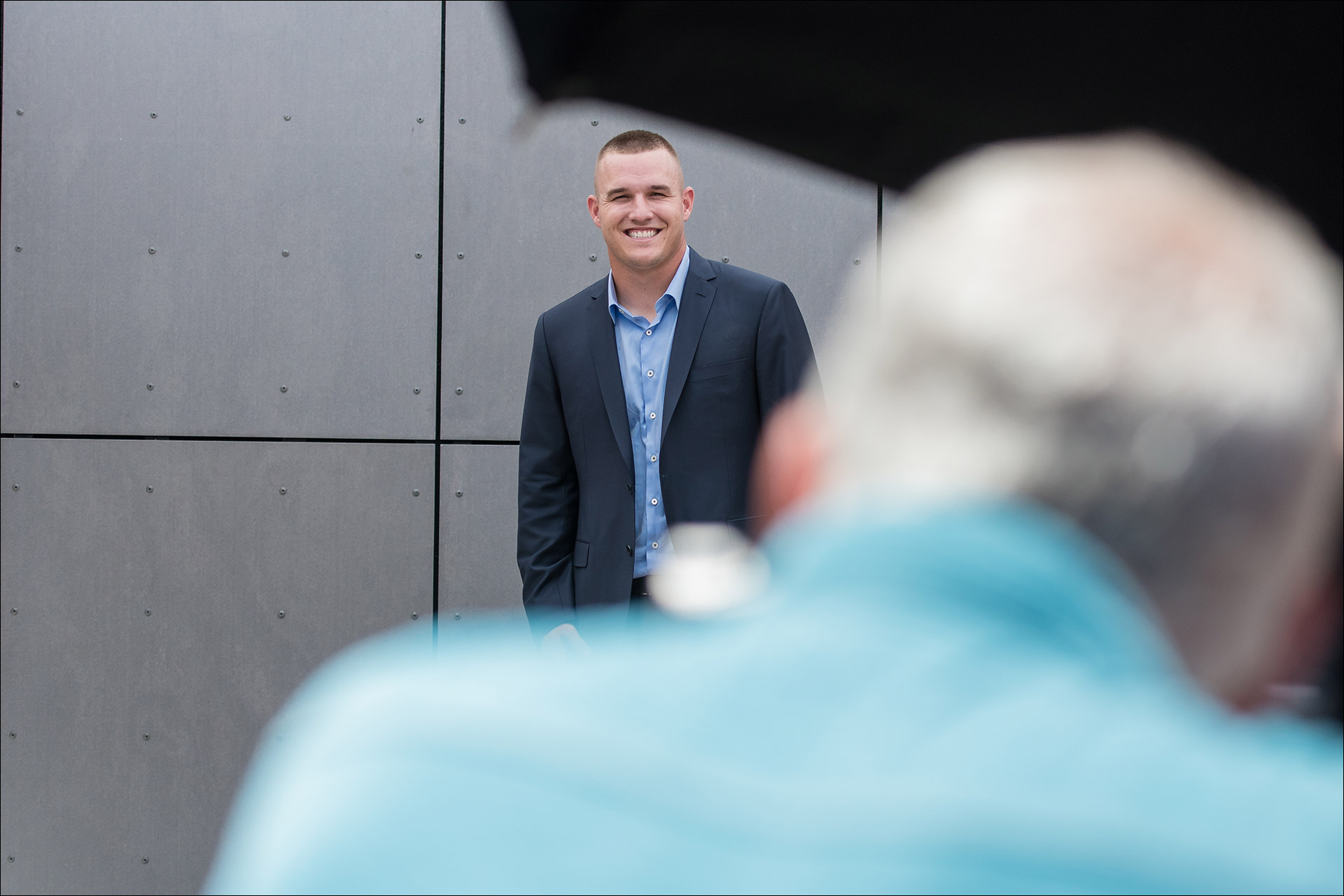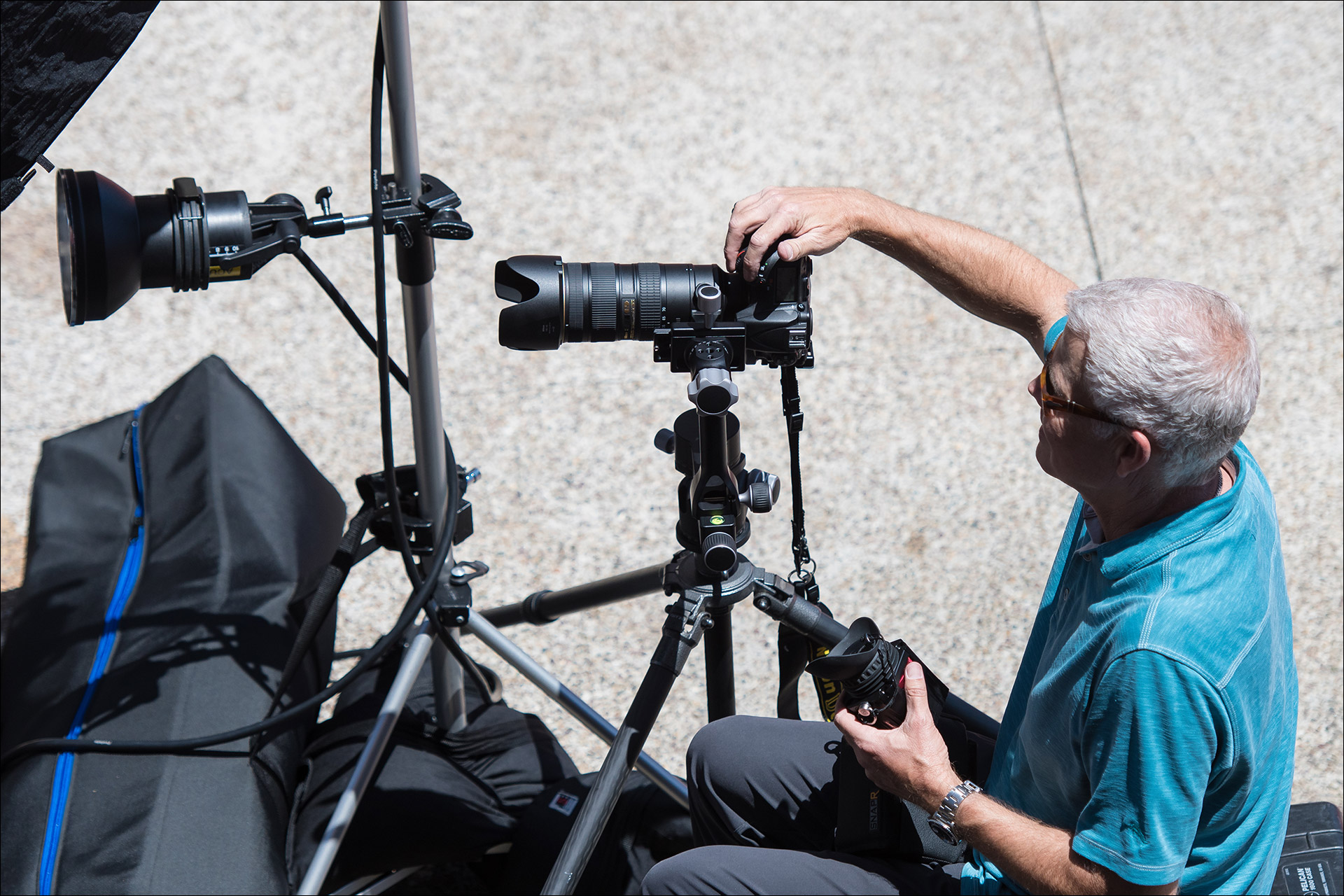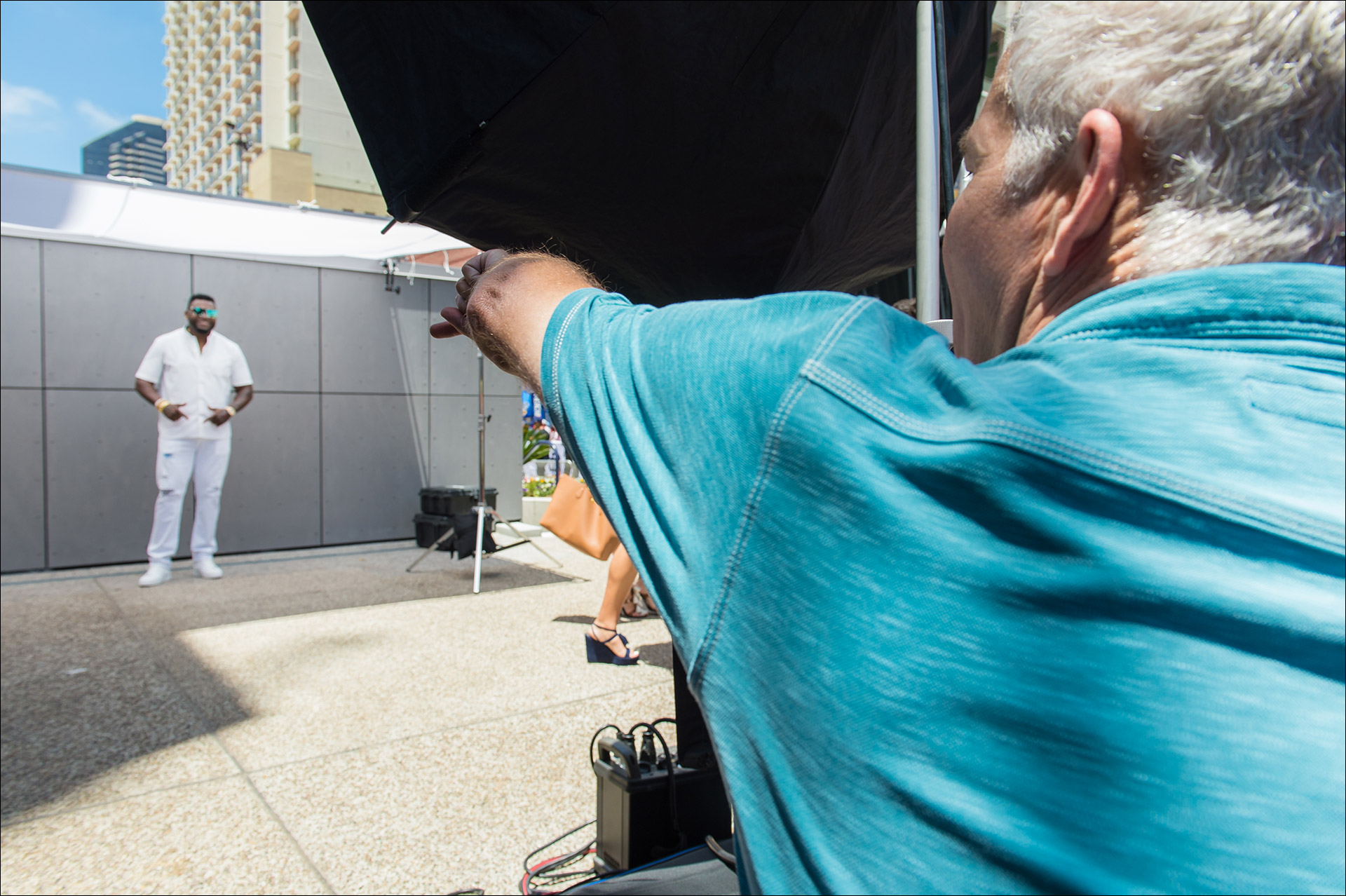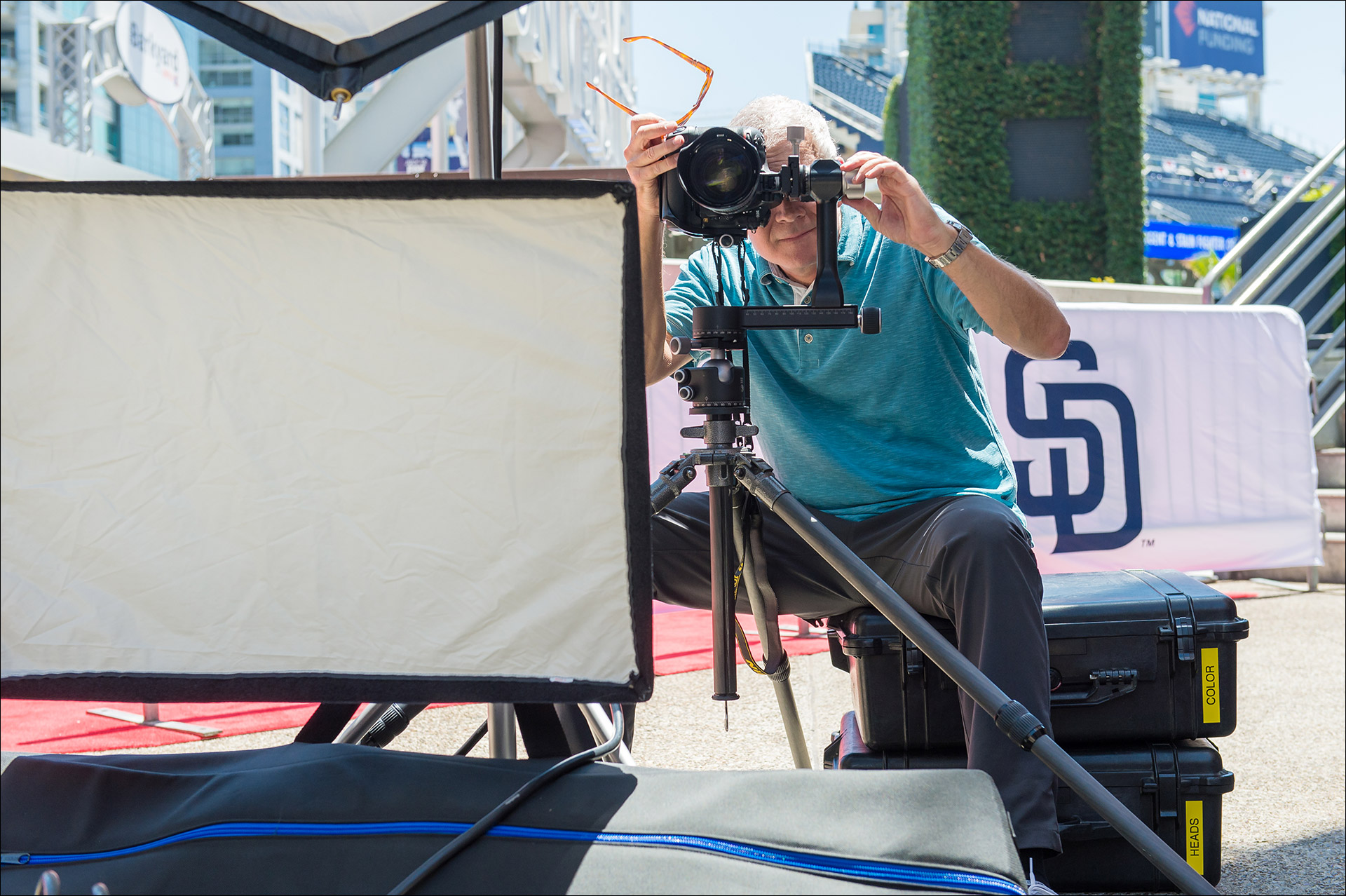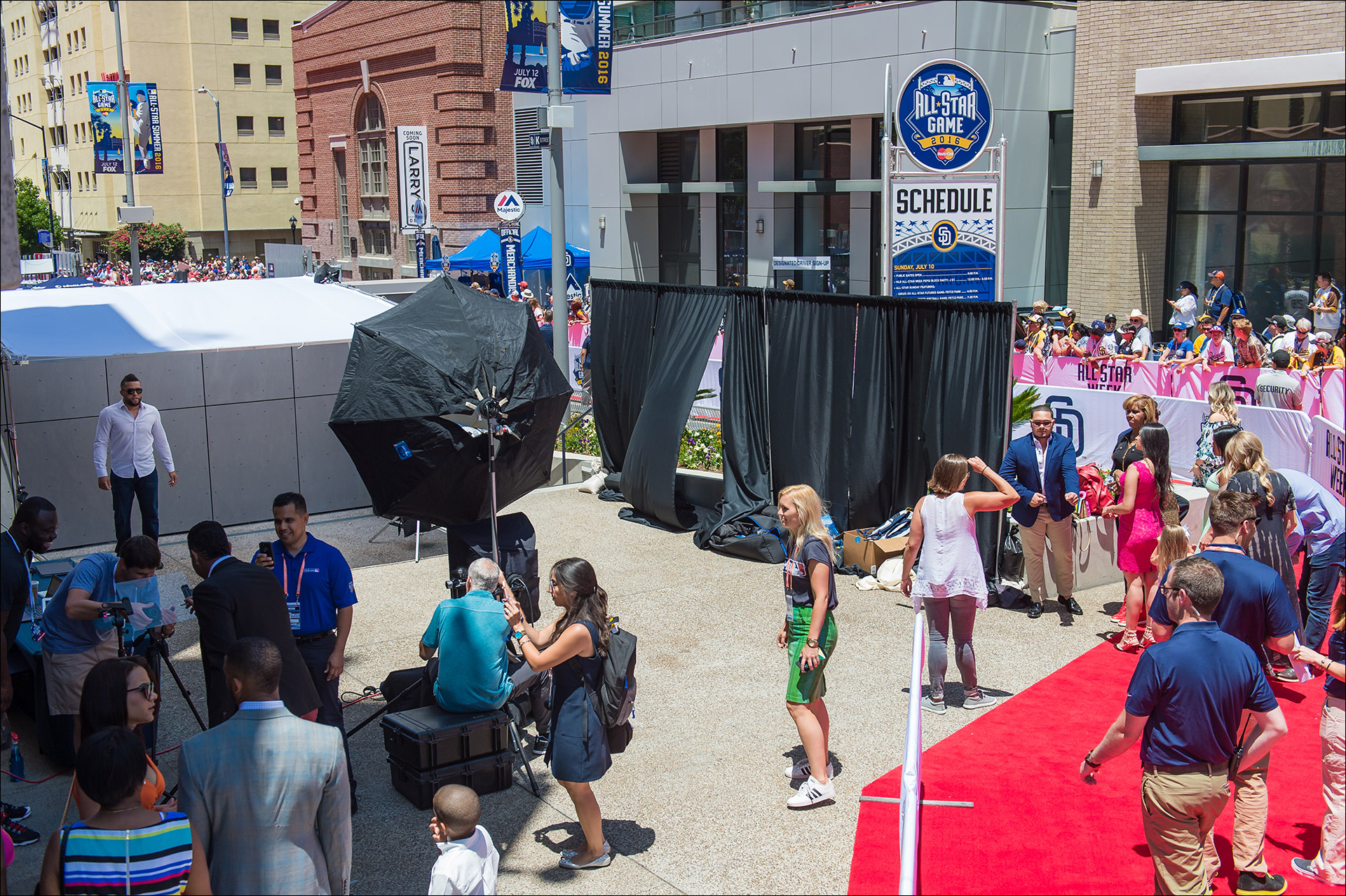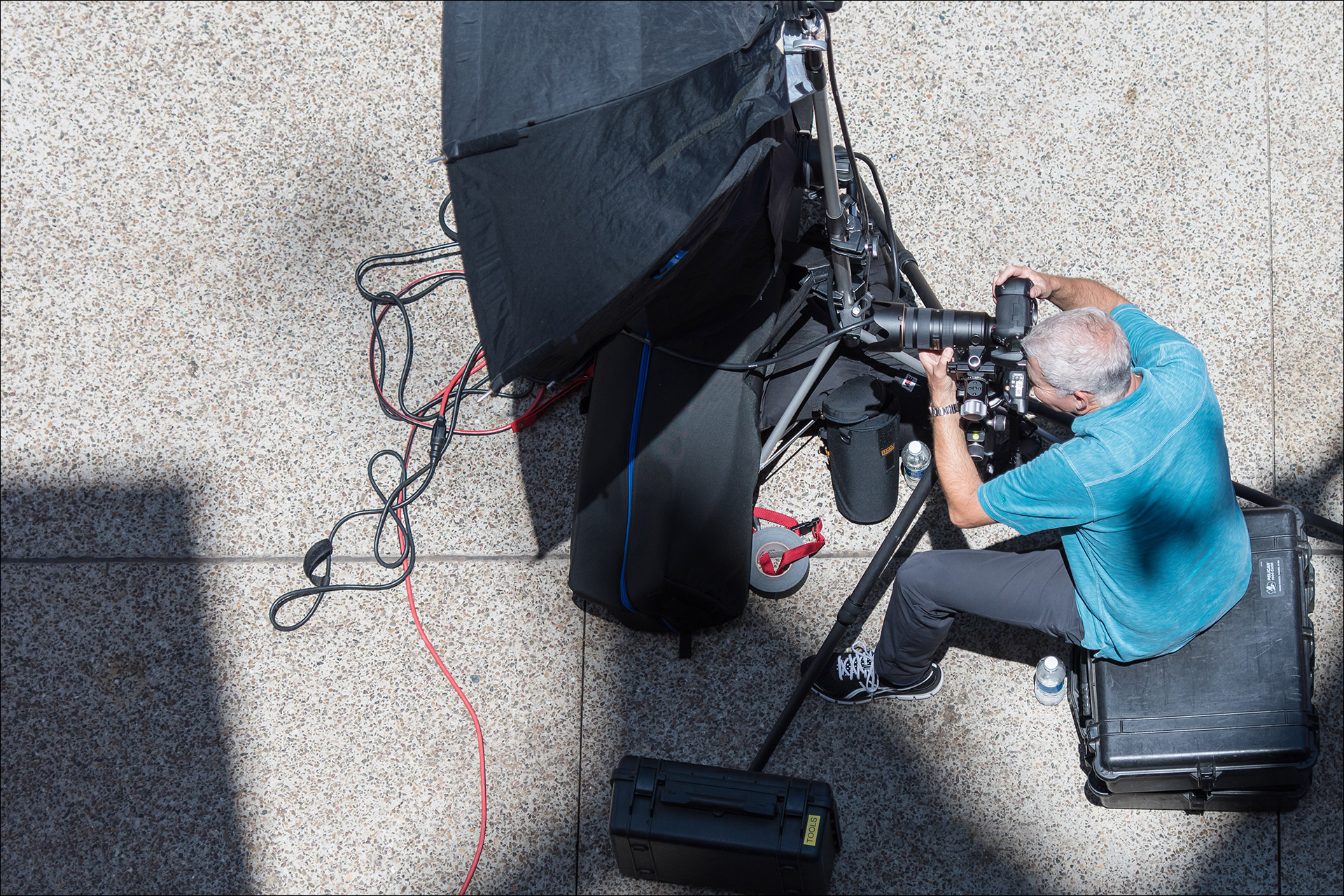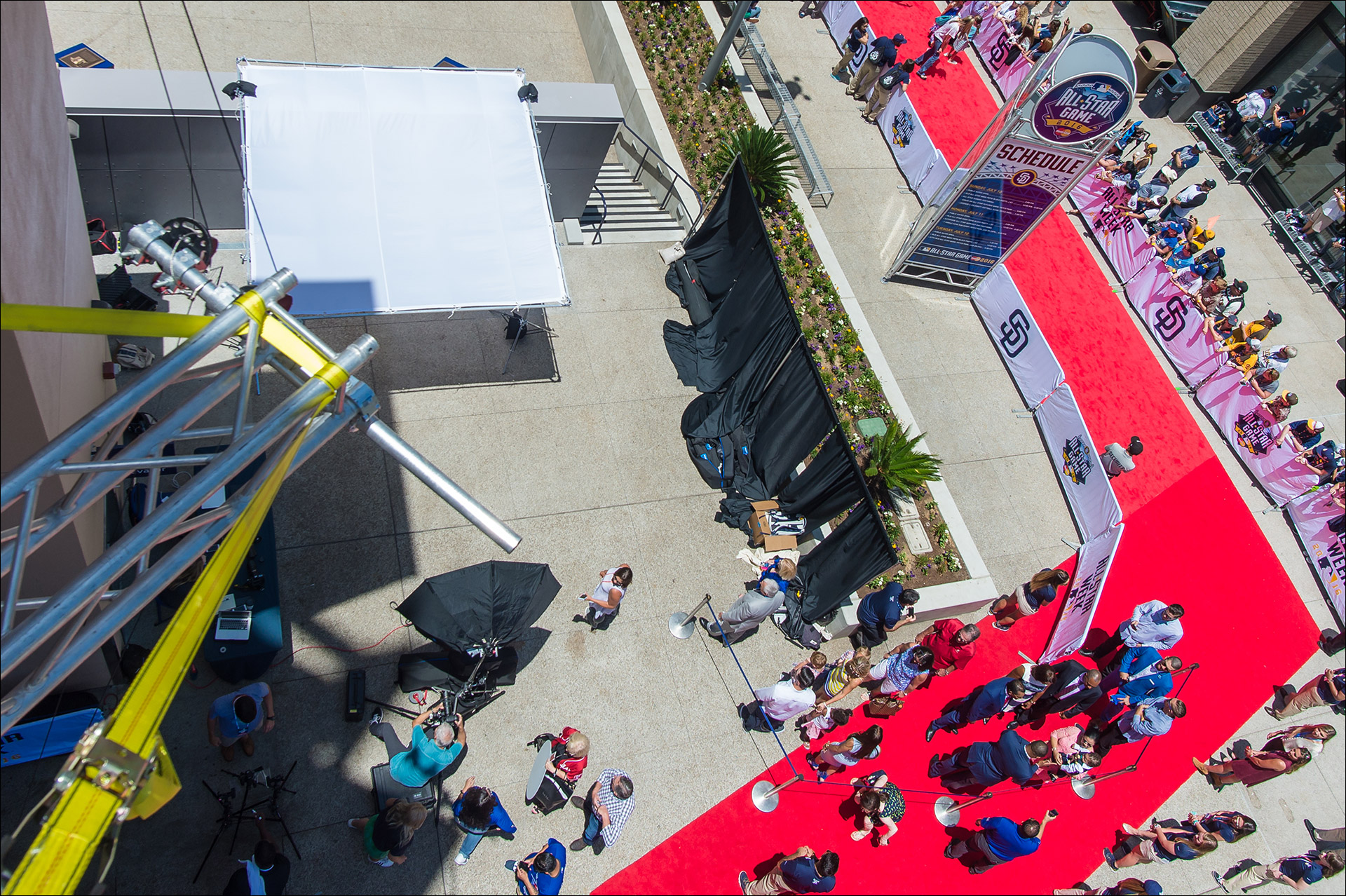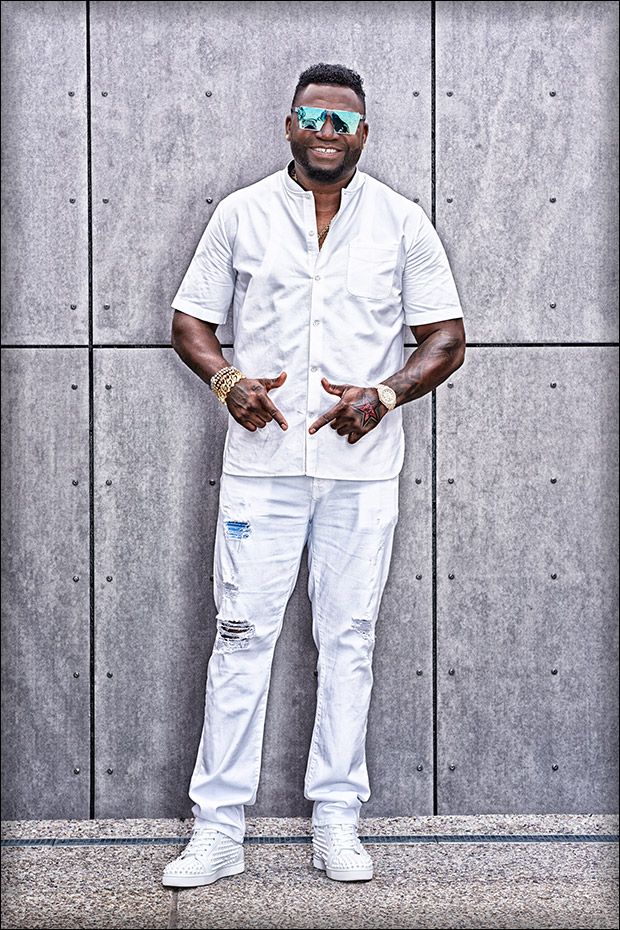
Elaborate portrait shoots can take place in some pretty challenging environments. I’ve made lighted portraits in sub-zero temperatures, inside prison walls, while airborne in a helicopter, on top of an 11,000 foot mountain, and even inside a space shuttle engine. Each presented a different set of problems, and each required a unique solution.
“Photo shoot is Latin for ‘problem.’”
Brad Smith, the former director of photography at Sports Illustrated, says, “Photo shoot is Latin for ‘problem.’” Problems are relative, of course, but there is something about a photo shoot that seems to generate more than its fair share of hurdles to clear.
It’s usually something gear-related that creates the most catastrophic trouble. A forgotten card wallet, dead camera batteries, or radio triggers that suddenly fail are the types of missing links that can instantly turn 800 pounds of photo gear into a useless heap. Even seemingly smaller problems like access, parking, weather, or the time of the shoot are potentially just as calamitous as a gear failure.
But when you can overcome those problems, the feeling can be one of the most satisfying parts of creating photographs—especially when you’re working with more than 70 of the world’s best athletes at the MLB All-Star Game. Even when you throw in the challenges of producing the shoot while in a public area, at noon, in under in 90 minutes, with more than 40,000 fans are descending upon the same physical space, it’s still deeply exhilarating to be a part of it all.
MLB All-Star Game | Photographs by Michael Der (Click to Enlarge)
The first and most significant challenge for the MLB shoot was simply getting the gear to and from the site where we would ultimately be working. Security and traffic controls at events like these create a bubble around the venue that makes getting a mountain of gear in and out truly challenging. These types of logistical problems are what often derail a shoot—or at the very least, put you perilously behind schedule. Simple things like parking, access, or venue security can sometimes be the most difficult chasm to cross.
At the outset of every photo shoot, my primary focus is to search for any potential failure point. It may not seem like the most optimistic way to look at things, but it helps to avoid getting tripped up by the simplest problem. For example, while scouting Petco Park in San Diego, one of the first needs that had to be fulfilled was power. Without power, battery strobe units would have to be utilized—and that’s an entirely different set of gear that should be packed rather than a/c units. Once we got over the electrical hurdle, the next question was the time of day we were going to be shooting.
It would be noon, of course.
I decided that the harsh light of high-noon could partially be solved by simply flying a Matthews 12×12 frame with a translucent Rag Place silk just above the subjects. This would have the effect of turning the noonday sun into a soft, diffuse light. By using such a large frame overhead, it would also cover the area on the wall, the ground, and on the subject. So, the difference in lighting between the raw sunlight and the diffuse overhead wouldn’t be seen in the final image.
But, nothing about a 12×12 is terribly simple. It requires assembly, heavy duty stands, and since the day turned out to be a bit breezy, the 12×12 also required 100 pounds of sandbags to keep it from flying away. Fortuanately, I had photographer Michael Der along who not only made sure nothing flew south to the border, but he was also instrumental in making the shoot go smoothly.
The additional strobe lighting we used was designed to give the players maximum flexibility with their poses. It started with the base exposure of the overhead 12×12 so that the entire set would be filled with the soft light passing through the silk. Adding a 5’ Chimera OctaPlus lightbank created some soft, front fill. I then added a Profoto Zoom Reflector Head positioned just beneath the OctaPlus and focused directly at the body of each player to add contrast, edge, and on-axis direction to the light. Ultimately though, I decided that at such a long distance, a very small softbox was a better choice to give me the snap I was looking for. A Profoto D4-2400 pack powered each of the heads and provided a very short flash duration, rapid recycle, and identical exposures from frame to frame.
“Privacy isn’t something that the subject will usually think about—until it isn’t there.”
Once the lighting was complete, the next challenge was going to be obtaining some privacy for the subjects. Being photographed is a deeply vulnerable experience—even for a professional athlete—so it seemed like a good idea to erect a barrier using pipe and drape so that the athletes wouldn’t feel as though they were being watched by thousands of fans while being photographed. Privacy isn’t something that the subject will usually think about—until it isn’t there. Providing some degree of intimacy can really help the subject find comfort in front of the camera.
Once the players began arriving at the ballpark, they proceeded along a red carpet while waving to the fans and media assembled along the barricades. At the end of the red carpet was the entrance to the ballpark. In order to have the best chance of photographing as many players as possible, we strategically positioned our portrait set between the end of the red carpet and the players’ entrance. And that’s where the biggest challenge of all would take place: Prompting an interesting pose or expression in the 60 seconds or so that I’d have with each subject.
For capture, I used my Nikon D5 and D810 cameras mounted to the AF-S Nikkor 70-200mm f/2.8G ED VR II lens. I chose the zoom because it gave me the flexibility to frame up the shot quickly without any compromise on sharpness. Some of the zooms I’ve owned in the past weren’t as sharp as my primes, but this one is as sharp as any lens I own.
Because there was good chance for the players to move around a lot, I decided to mount the Nikons to a gimbal head. I use the gimbal made by Really Right Stuff and find it to be amazingly helpful when I’m shooting a subject that needs subtle adjustments to maintain the framing. The gimbal has all of the support benefits of a traditional tripod head, with almost none of the movement restrictions
Once the players got in front of the camera, it was really fun to see what each had chosen as their own personal fashion statements. Some went with a tradional fine suit, while others chose an eclectic ensemble. My favorite subject though was the great Red Sox slugger, David Ortiz—who was dressed in all white from head to toe. With Ortiz retiring at the end of the season, this was likely going to be the last chance I’d get to see and photograph the great man. After a minute or two of shooting, I thanked him for the time he’d given us. As he walked into the clubhouse, Ortiz fittingly replied, “No problem.”
Joey Terrill is a Los Angeles-based photographer with clients that include American Express, Coca-Cola, Disney, Golf Digest, Major League Baseball, Red Bull, and Sports Illustrated. He teaches workshops and speaks at seminars including the Summit Series Workshops, WPPI, Atlanta Photojournalism Seminar, UPAA Symposium, World in Focus, and Nikon School.

